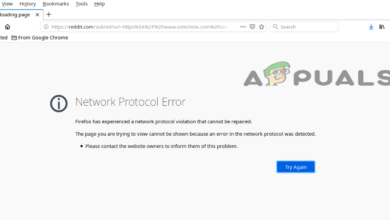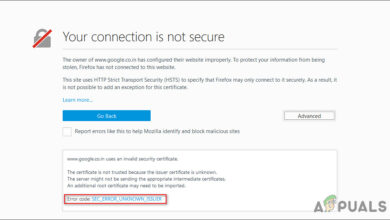Fix: Can’t Set Firefox as Default Browser on Windows 10
A lot Mozilla Firefox users are complaining that they can’t get Windows 10 to accept Firefox as the default browser on their system. The issue seems to be specific to Mozilla Firefox since most affected users are reporting that they are able to set Chrome or a different browser as the default, but not the Firefox browser.

What is causing the ‘can’t set Firefox as the default browser’ issue?
We investigated this particular issue by looking at various user reports and the workarounds that they used to make the setting permanent. Based on our investigations, there are a couple of common scenarios that are known to trigger this erroneous behavior:
- Bad Firefox installation – This issue is confirmed to occur in those cases where a corrupted / incomplete Firefox installation is causing Windows to disregard your ‘set as default requests’. This is typically reported to appear in cases where the user just removed a browser hijacker or other type of adware/malware that infected Mozilla Firefox.
- Windows update interfered with Firefox – Both parties (Microsoft and Mozilla) acknowledged that one particular Windows 10 update ended up breaking the ‘set as default’ functionality for Firefox. In this case, the solution is to simply reinstall the browser.
If you’re currently looking for a fix that will resolve this particular behavior, this article will provide you with several troubleshooting strategies. Down below, you’ll discover several methods that other users in a similar situation have successfully used to get the issue resolved.
If you want to remain as efficient as possible, we encourage you to follow the methods in the order that they are presented, since the potential repair strategies are ordered by efficiency and severity.
Method 1: Reinstalling Firefox
If the issue is caused by a bad Firefox installation, reinstalling the browser along with all its components will resolve the issue in a swift matter. Several affected users have reported that this procedure allowed them to finally set Firefox as the default browser on their Windows 10 computer.
Here’s a quick guide on reinstalling Mozzila Firefox to resolve the ‘can’t set Firefox as the default browser’error:
- Press Windows key + R to open up a Run dialog box. Then, type “appwiz.cpl” and press Enter to open the Programs and Features screen.

Type appwiz.cpl and Press Enter to Open Installed Programs List - Inside the Programs and Features screen, scroll down through the list of installed applications, right-click on Mozilla Firefox, then click on Uninstall to get rid of the browser.
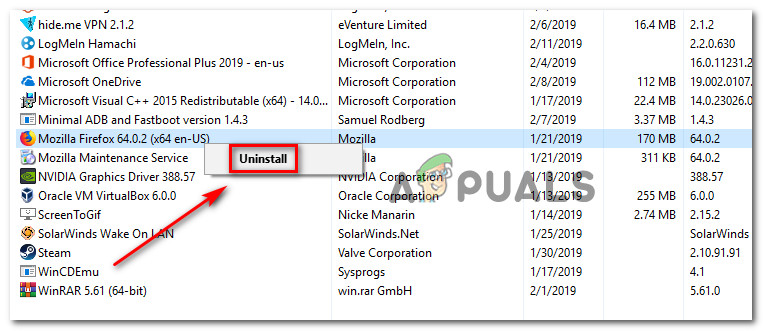
Uninstalling Mozilla Firefox - Follow the on-screen prompts to complete the uninstallation process of Mozilla Firefox.

Uninstalling Mozilla Firefox - Once the uninstallation process is complete, restart your computer.
- At the next startup, visit this link (here) from your default browser and click on Download Now to download the installation executable of Mozilla Firefox.

Downloading the Firefox installation executable - Once the installation is complete, accept the UAC (User Account Control), then follow the on-screen prompts to reinstall Mozilla Firefox on your computer.

Installing Mozilla Firefox - Upon opening the browser for the first time, you will be asked if you want to set the browser as your default. When prompted, click on Use Firefox as my default browser.

Setting Firefox as the Default browser If this method didn’t allow you to set Mozilla Firefox as the default browser or the setting wasn’t maintained after a restart, move down to the next method below.
Method 2: Changing the default browser from the Default Apps
Most users that we’re struggling to get Windows 10 to remember Firefox as the default browser has reported that they were able to get the setting to stick by modifying the default browser from the Default Apps menu.
As it turns out, going this route will make Windows 10 a lot more likely to recognize Firefox as the default browser. Here’s a quick guide on changing the default browser via the Default Apps menu:
- Press Windows key + R to open up a Run dialog box. Then, type “ms-settings:defaultapps” and press Enter to open up the Default apps menu of the Settings app.

Accessing the Default Apps window - Inside the Default apps tab, scroll down to the Web browser section, click on the browser that is currently set as the default and choose Firefox from the newly appeared menu.

Setting Firefox as the default browser - Once the default browser has been modified, restart your computer and see if Firefox remains the default browser.
If you find that the setting you previously set has not persisted, move down to the next method below.
Method 3: Using the classic Control Panel menu
If the two methods above didn’t allow you to resolve the issue and you’re still seeing that Firefox is not being accepted as the default browser, you can try to repeat the operation from the classic Control Panel menu. Several affected users have reported that the default browser change became permanent after they used the old Control Panel interface to change the default browser.
Here’s a quick guide on using the classic Control Panel menu to change the default browser:
- Press Windows key + R to open up a Run dialog box. Then, type “control” or “control.exe” and press Enter to open up the classical Control Panel interface.

Running classic Control Panel from the Run box - Inside the classic Control Panel interface, use the search function in the top-right corner to search for “default programs“. Then click on Default Programs from the search results.
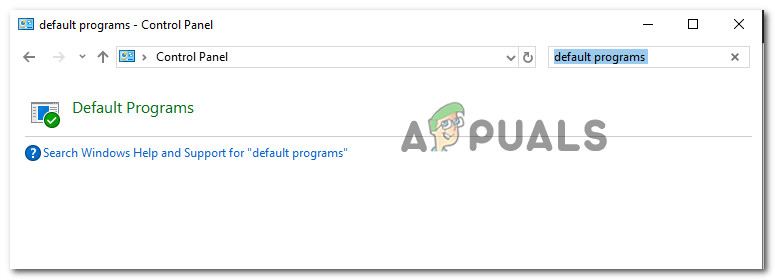
Opening the Default Programs window - From the Default Programs menu, click on Set your default programs.
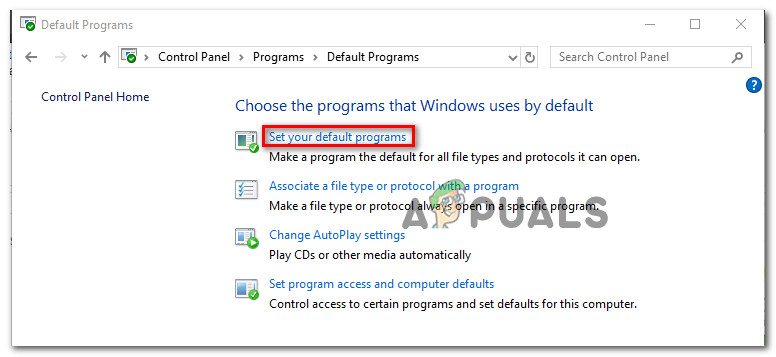
Accessing the Default Programs list - In the Default apps menu, scroll down to Web browser, click on the current browser, then select Firefox from the list.
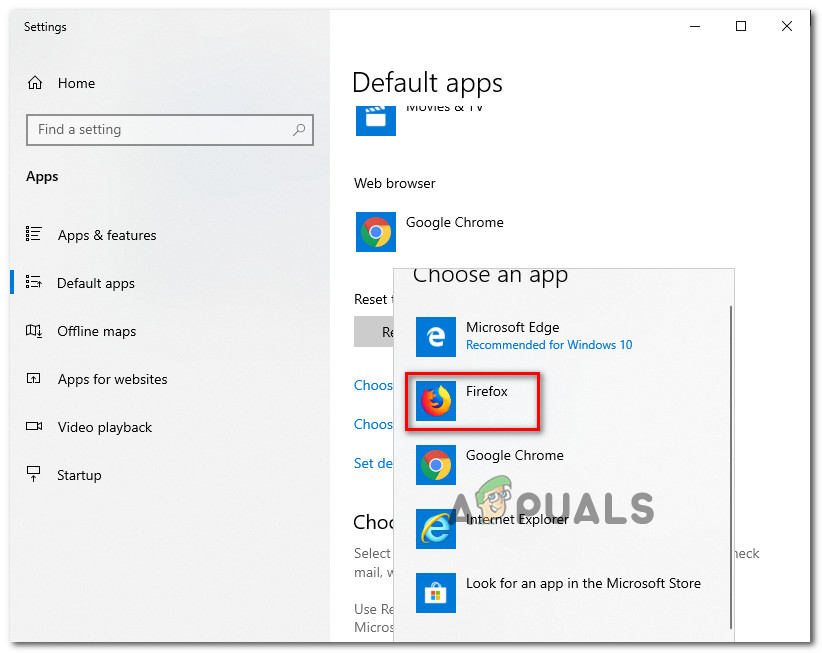
Setting Firefox as the default browser - Restart your computer and see if the changes are preserved once the next startup is complete.
If you’re still encountering the same issue, move down to the next method below.
Method 4: Enforcing Firefox via the Defaults by App menu
If you’ve come this far without a result, there’s one final method that might just allow you to get the issue resolved and get the default browser preference to remain set to Firefox indefinitely.
Several users that tried most of the other methods featured above without success have reported that they were finally able to get a permanent change by using the Choose defaults for this program menu.
Here’s what you need to do:
- Press Windows key + R to open up a Run dialog box. Then, type “ms-settings:defaultapps” and press Enter to open up the Default apps menu of the Settings app.

Accessing the Default Apps window - In the Default apps menu, scroll down to the bottom of the screen and click on Set defaults by app (above Choose your default apps)
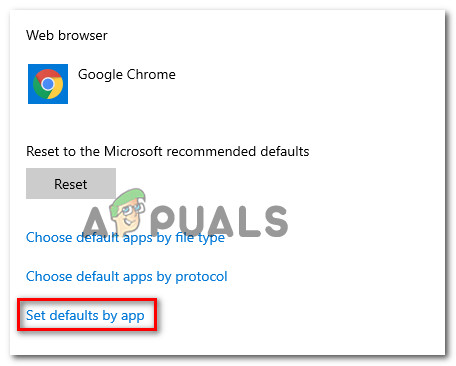
Accessing the Set defaults by app menu - In the Set defaults by app menu, scroll down through the list and click on Firefox. Then click on Manage to open the menu dedicated to Firefox.
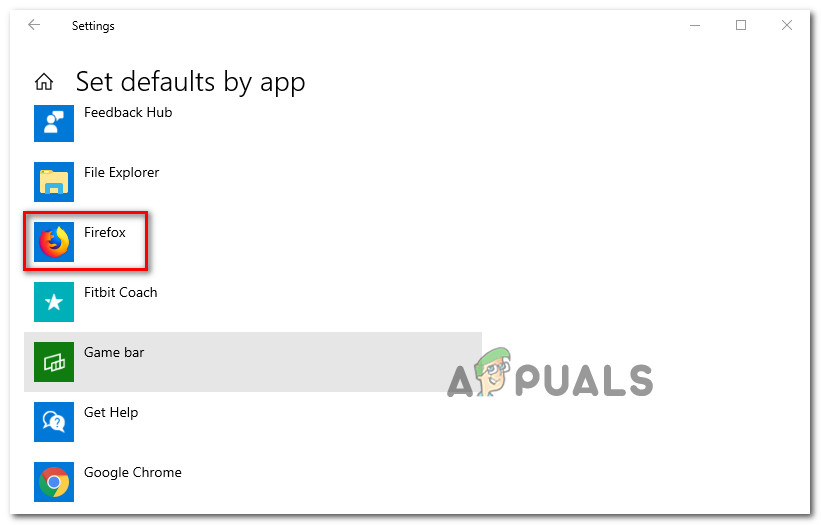
Accessing the Default menu of Firefox - Next, change every file type listed under File type and protocol associations to Firefox.

Changing every supported File type to Firefox. - Once every supported file type is changed to Firefox, restart your computer.
- At the next startup, see if the change has become permanent.
Method 5: Using Command Prompt
In certain situations, Firefox can be set as the default browser by using the command prompt. Just follow along with the steps listed below to do so.
- Press “Windows” + “R” to open the Run prompt.
- Type in “cmd” and press Enter.

Running the Command Prompt - Type in the following command and press “enter” to execute it.
"C:\Program Files\Mozilla Firefox\uninstall\helper.exe" /SetAsDefaultAppGlobal
- Check to see if the issue persists.




